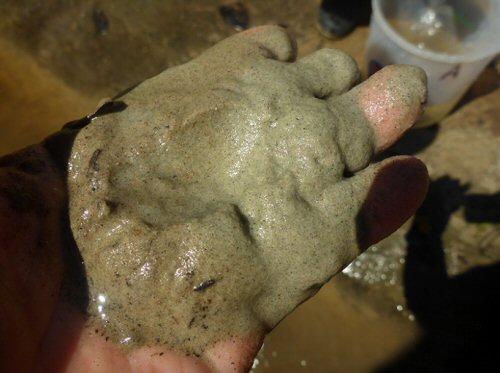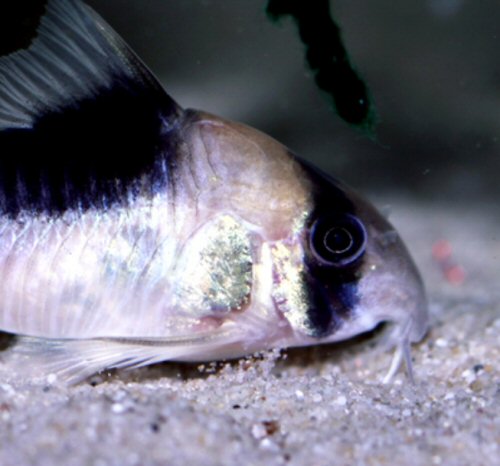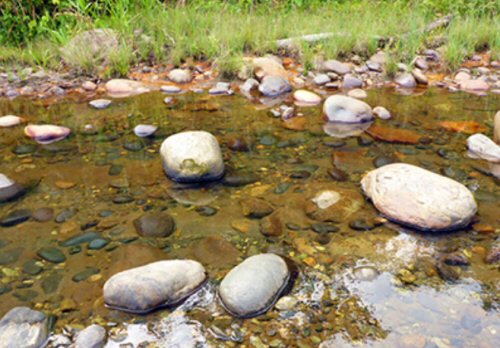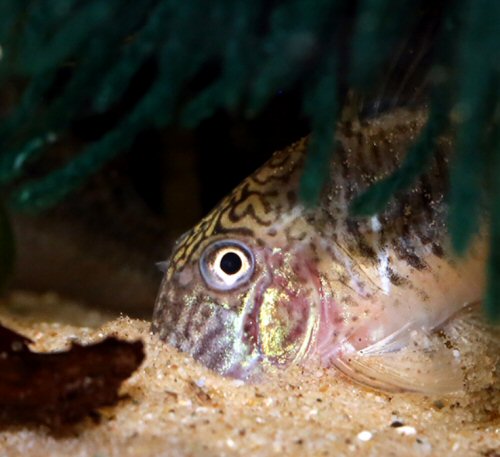SCOTCAT.COM
your internet guide to all things catfish
| Corydoradinae Habitat Conditions |
| by Ian Fuller |
The first thing to remember with this group of fishes is that they are primarily filter feeders. They do not have cutting or crushing teeth like some of the predatory Catfish, nor do the have rasping teeth like the grazing Loricariid Catfish, these fish will sift the substrate, which in the majority of cases is sand. Smooth sand which been created over millions of years by the constant tumbling action of moving water, whether it be the oceans tidal and wave actions or the constant varying flow of rivers. The more the flow and tumbling action the finer the sand becomes.
Natural River Sand
In some areas the sand found can be fairly course, and grains could be as large as one millimetre, or as fine as caster sugar, the one thing that will be common is that the grains will be smooth and not sharp and gritty like quarried sand as use in the building industry. Over many years I have spent many hours watching, and filming Cory’s feeding, in some cases it is quite comical, especially with the larger straight (Lineage 8) and curved (Lineage 1) snouted species who tend to bury the deepest, Some almost completely burying themselves when they dive right in searching out the food they sense is there. I have taken video clips of the feeding actions of several species from different lineages. And all, even the smallest species will mouth the sand.
Corydoras sp CW051, sand being ejected out though the base of the gill cover
|
| Many people argue and state that “Their Cory’s are perfectly happy living over gravel”. But I find it very difficult to see how they can determine the happiness of a fish. They may be surviving and because they are actively scurrying around in their constant hunt for food are seen as being happy. I have seen video’s on face book showing the presenter displaying a rough irregular gravel they discovered at a particular location and stating that Cory’s are happy living amongst it. However, I know and have collected in that very location many times and the gravel compound that the person in the video is showing is actually part of the aggregate that was used during the construction of the relatively new nearby road bridge. There are places where there are gravel, pebble and rock rivers and streams, but when taking a good look at some of these places the streams and riverbeds are sand. The natural habitat of C. weitzmani is one such place. I have never seen deep layers of a single sizes gravel; it is always a range of many variable sizes and usually it appears as a widespread scattering.
C. weitzmani habitat, gravel, pebbles and boulders on a sandy bottom
The biggest problem with using any type of gravel in an aquarium is that food particles will fall between the particles and decompose, and if the aquarium is not maintained and or filtered adequately the water quality will deteriorate very quickly. The other danger as far as keeping Cory’s over gravel is the fact that they cannot easily move gravel to access the particles of food within it, and if the gravel is of anything other than smooth and rounded particles they can and often do damage their delicate barbels and mouths parts. As I hinted at earlier, different forms and sizes of Cory will feed at different levels in the substrate, from dwarf species working the surface, medium round snouted species delving five or six millimetres into it, and the larger straight and saddle snouted species often burying themselves.
C. geofroy getting stuck in looking for tubifex worms
Regarding decoration, naturally there are few plant laden habitats, most are plain sand streams and riverbeds, in swampy areas there may be some vegetation, but there will certainly be lots and lots of leaf litter, tree roots, fallen branches, twigs and vine roots.
|
References |
Photo Credits |
Author |
If you would like to contribute an article, please e-mail me. You will of course be credited for your work.
If you would like to donate any denomination of money to the site just click the above link button. All proceeds will go to running the site and hopefully to keep it going for a few years yet.
Print or e-mail this factsheet below





